Paddlefish at the Scottsdale Aquarium
An afternoon watching paddlefish at the Scottsdale, Arizona Aquarium
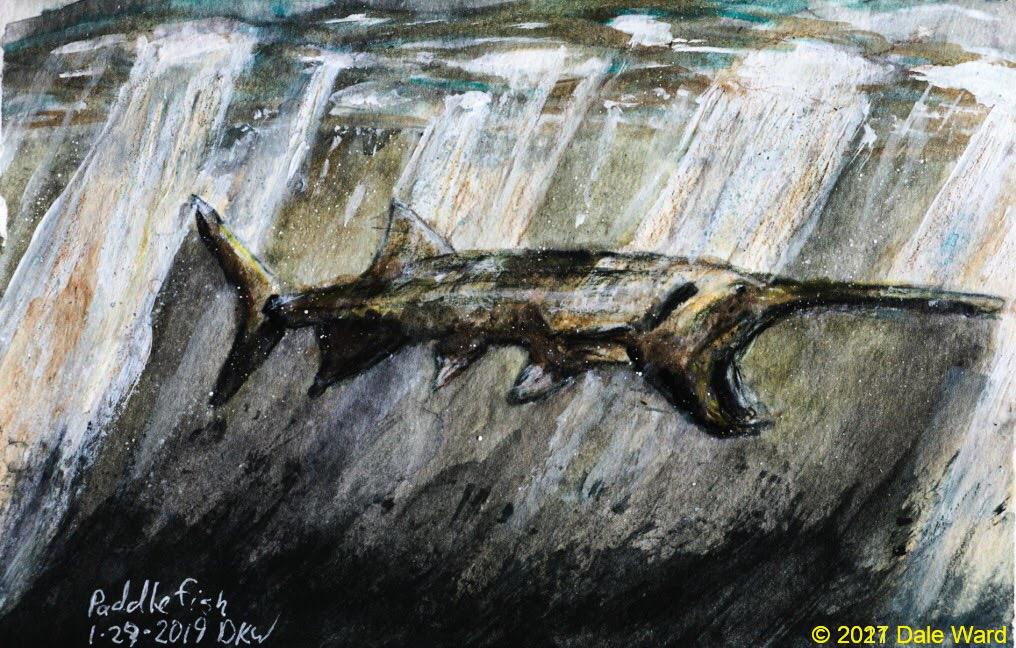 A Paddlefish feeding near the water surface on a sunny day. Watercolor and gouache. This is how I imagined them when we lived in North Dakota.
A Paddlefish feeding near the water surface on a sunny day. Watercolor and gouache. This is how I imagined them when we lived in North Dakota.
Around 1974, when we lived in North Dakota, my Dad and I would go fishing nearly every weekend we could. One of our favorite places to fish was Lake Sakakawea, a big reservoir on the Missouri River.
We’d fish for Northern Pike. It was pretty thrilling - they seemed like enormous freshwater monsters when we would bring them in.
Lake Sakakawea was also a good place for Paddlefish. People usually fish for Paddlefish by snagging them, since the fish won’t take lures. We thought that snagging seemed..I don’t know…wrong, for some reason, and we never tried it. So we never saw the Paddlefish.
But knowing that they lived in the same waters we were fishing was hugely thrilling to us.
So when I heard that the Odysea Aquarium in Scottsdale was running its “River Monsters” exhibit…and that the exhibit included Paddlefish….and Hey! I was already in Scottsdale…well, now. I had to see this.
The display was spectacular. The fish were in an enormous tank that was perhaps four or five feet deep. I’d guess there were twenty or thirty Paddlefish in the tank. The fish were perhaps four feet long or so, and they were swimming through the tank in large, looping formations.
It was a very striking display, with the black, otherworldly, shapes of the fish passing by in armadas.
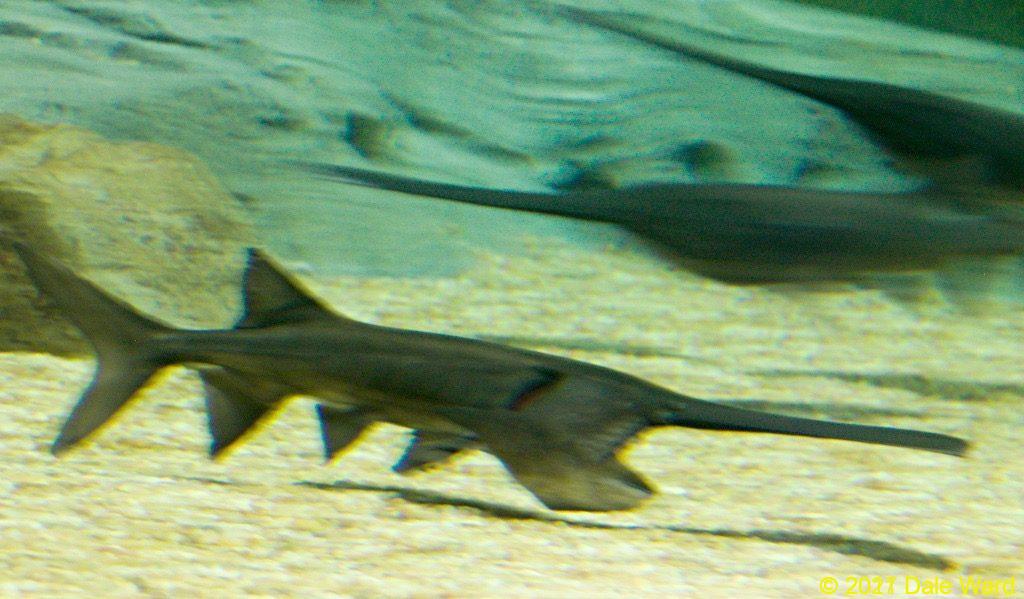 Paddlefish feeding at Scottsdale’s Ocean Odysea aquarium.
Paddlefish feeding at Scottsdale’s Ocean Odysea aquarium.
Those big paddle-noses are covered in electro-receptors. The Paddlefish use them to detect the minute electrical currents created when zooplankton move their limbs.
How astonishing.
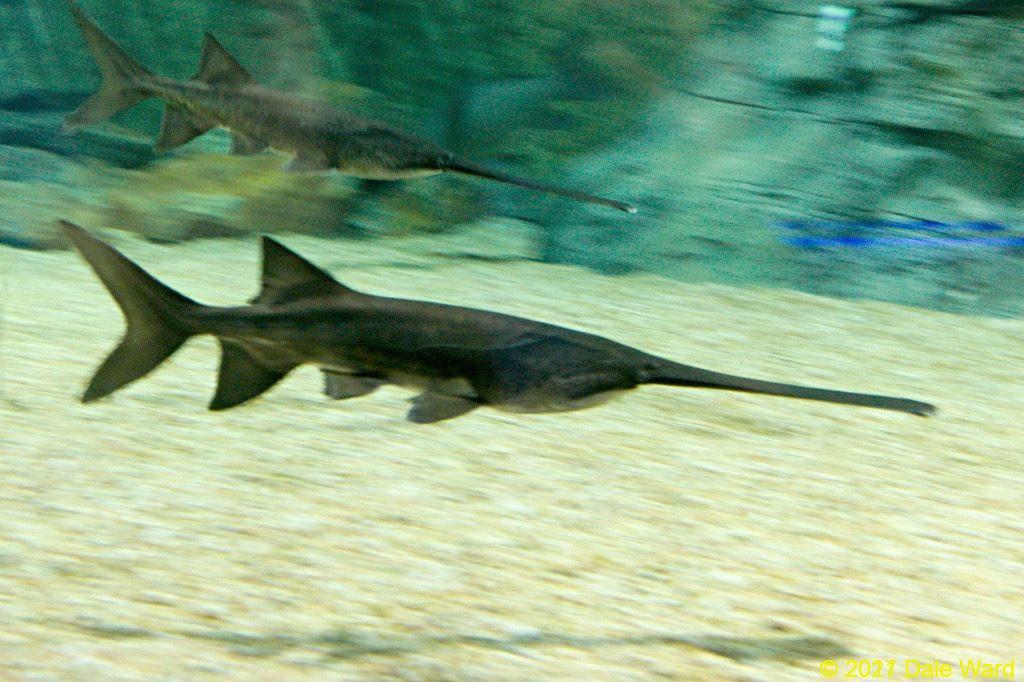 Paddlefish at Scottsdale’s Ocean Odysea aquarium.
Paddlefish at Scottsdale’s Ocean Odysea aquarium.
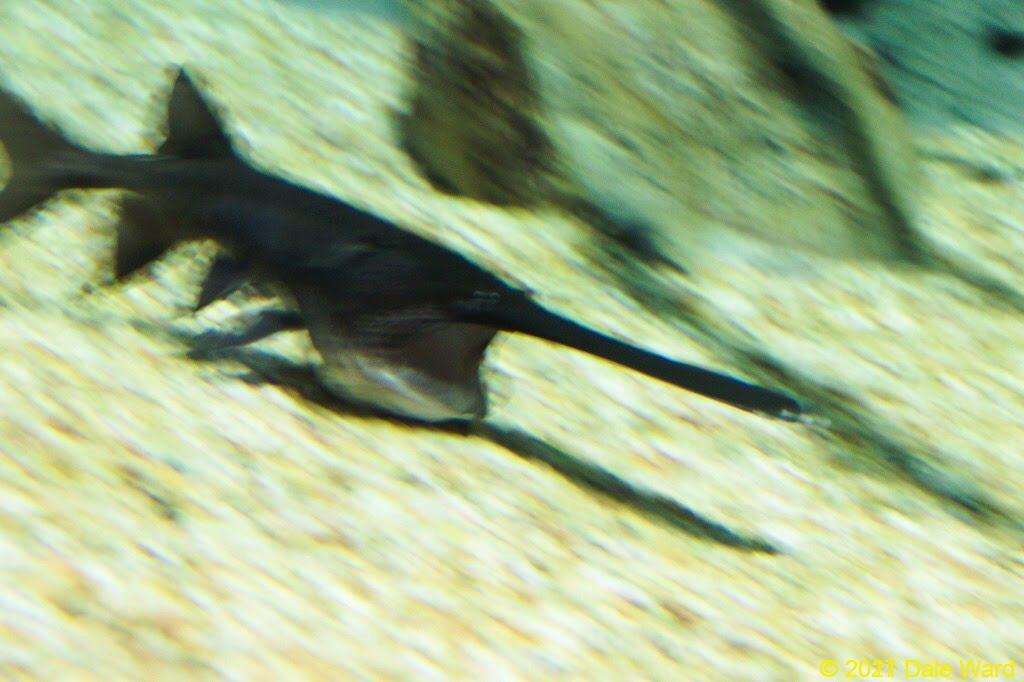 Paddlefish feeding at Scottsdale’s Ocean Odysea aquarium. The Paddlefish were swimming quickly, and there wasn’t a lot of light. Hence the blurry photos.
Paddlefish feeding at Scottsdale’s Ocean Odysea aquarium. The Paddlefish were swimming quickly, and there wasn’t a lot of light. Hence the blurry photos.
Paddlefish eat mostly zooplankton. They use those huge bucket-mouths as intakes, filtering the plankton out of the water.
The combination of their big, hanging mouths and their long paddle-noses make them look like some sort of weird goblin/Basking Shark combination.
I could see that at least a few of the fish had raw spots on the tips of their paddles, likely from bumping into the tank wall. The designers of the aquarium had tried to minimize this by rounding out the tank, giving the fish smooth, arcing pathways through the tank, but I guess there’s only so much that could be done.
I was surprised to read that Paddlefish are actually pretty good hatchery fish, in that they respond well to aquaculture/fish-farming techniques. The fact that they eat zooplankton avoids some of the issues that other fish, those that eat higher up the food-chain, have with aquaculture.
That’s probably a good thing. I was also reading that there is a growing problem with poaching Paddlefish for their roe - then selling the roe as caviar.
Paddlefish are supposed to live a long time in the wild, something like fifty or sixty years. They don’t begin breeding until they are about fifteen years of age or so. I wouldn’t think that a Paddlefish population would withstand much commercial fishing pressure or poaching.
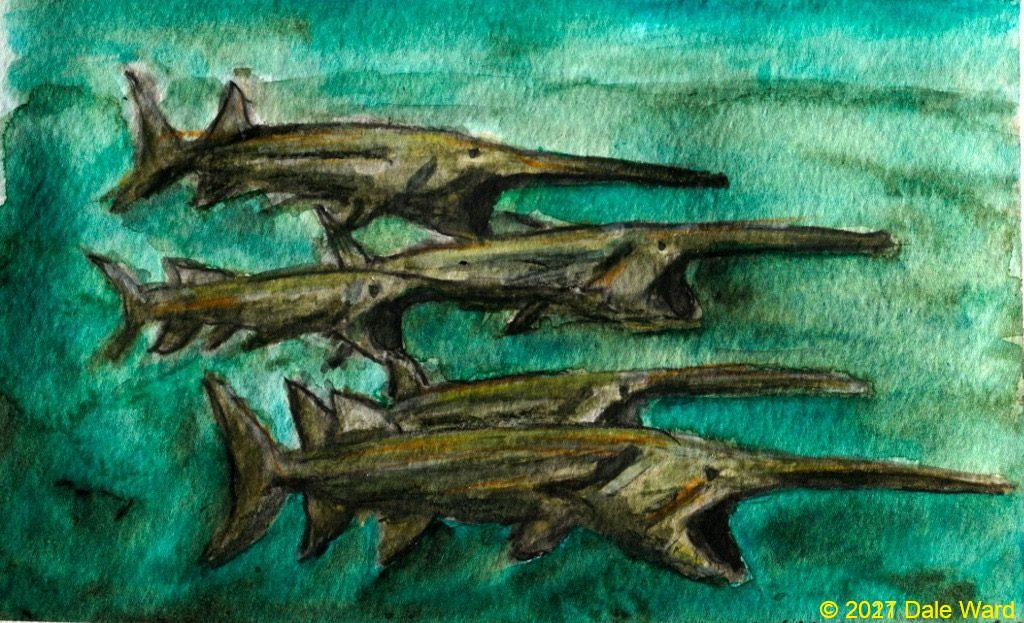 Group of Paddlefish feeding. Watercolor and watercolor pencil.
Group of Paddlefish feeding. Watercolor and watercolor pencil.
Anyway. That’s how I think of them, though I’ve never seen them in the wild - as big freshwater basking shark analogues, moving silently through the water in herds, like buffalo.